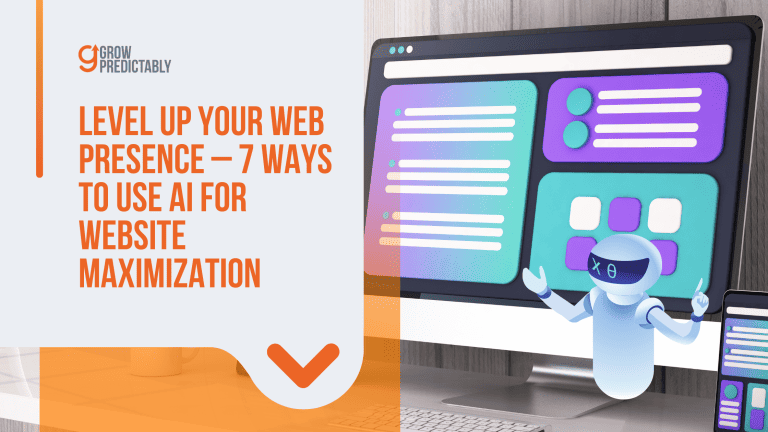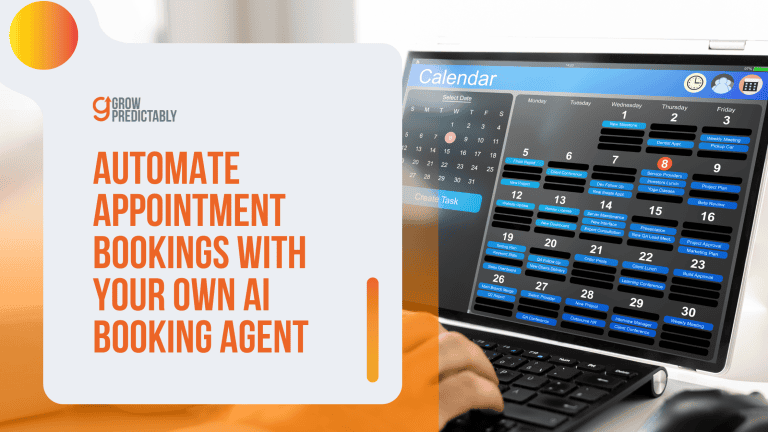How to Implement B2B AI Outbound Calling in 5 Easy Steps
You hear “AI outbound calling” and think: expensive, complex, risky.
Fair.
But what if the biggest risk is doing nothing?
Because your competitors aren’t waiting—they’re already scaling faster, scheduling more demos, and spending less to do it.
This guide isn’t hype.
It’s the practical 5-step framework that’s helping lean teams punch above their weight.
The only question left: how fast can you implement it?
Understanding AI Outbound Calling

AI outbound calling isn’t just another tech upgrade—it changes the entire approach to customer outreach.
Instead of a person manually dialing one number at a time and reading off a script, AI handles thousands of calls simultaneously, adjusts in real time based on how people respond, and gathers customer data from each interaction to get even better over time.
AI outbound calls enhance customer satisfaction and consistency across various industries.
That’s not a step forward.
That’s a new standard.
Businesses are moving fast on this.
McKinsey reports that 69% of companies saw increased revenue after adding AI to their sales operations.
AI platforms also offer global reach with multilingual capabilities, supporting over 30 languages to cater to a diverse audience.
And outbound calling is one of the first areas where they started.
You go from hoping someone picks up to knowing when they’re most likely to answer—and then giving them a conversation that actually feels human.
AI uses engagement patterns from CRM systems to optimize the timing and nature of calls, ensuring interactions align with customer preferences and behaviors.
Breaking Down AI Outbound Calling
So, how does it really work?
AI outbound calling uses a stack of intelligent technologies that handle the entire outreach process—from dialing the phone to carrying the conversation—all without needing a person on the other end.
But this isn’t a robotic voice playing back a pre-recorded message.
This AI can pause, respond, ask clarifying questions, and adapt to unexpected answers using conversational AI to understand intent and manage complex dialogues.
Here’s what’s under the hood:
- Natural Language Processing (NLP): This part listens, understands, and responds in real words, not robotic phrases. It picks up on intent, tone, and even emotional cues in what the other person is saying.
- Predictive Dialers: These are the brains behind knowing who to call and when. They use patterns from past interactions and current behavior to predict the best time to make each call.
- Machine Learning: With every interaction, the system gets smarter. It tracks which wording works, which tone keeps people on the line, and what time of day leads to the most conversions—then loops that customer data into the next set of calls.
Additionally, a virtual voice assistant facilitates AI-powered outbound calls by optimizing call timing through data analysis and seamlessly handling inquiries to enhance customer interaction.
The result?
A system that doesn’t just work around the clock—it keeps improving while it does, making outbound AI calls more personalized and reliable.
Comparing Traditional and AI Outbound Calling
Let’s make this clear.
Traditional outbound calling has limits—hard limits.
Your team dials numbers manually, one at a time.
They leave voicemails that don’t get checked.
They read from scripts that sound, well, scripted.
And at the end of the day, most of their time is spent just trying to get someone to stay on the line, not closing deals.
AI flips this completely.
Here’s why businesses are switching:
- Manual Phone Calls? Gone. AI systems dial hundreds of numbers at once while tracking pickup rates to find the best calling windows.
- Static Scripts? Not anymore. AI adjusts based on what the person says, using proven phrasing to keep things natural without going off topic.
- Human Error? Reduced massively. AI doesn’t get tired, distracted, or frustrated—and that consistency leads to better customer experiences.
- Data Black Holes? Problem solved. Every call feeds into an analytics system that highlights what’s working, what’s not, and where to improve.
- Automated Lead Qualification? Absolutely. AI qualifies leads effectively using natural language understanding, increasing call volume and customer satisfaction.
And it’s not just theory—there’s real proof.
A report from Gartner found that businesses integrating AI into customer interactions cut contact center costs by up to 30%.
At the same time, they increased call engagement and retention.
Take this in: You’re not just reaching more people.
You’re doing it with more relevance, more speed, and way less resource waste.
Businesses engage with their audiences through AI-driven outbound calling technologies, utilizing advanced algorithms and customer data for personalized and timely interactions.
| Traditional Calling | AI-Powered Calling |
| One agent making one call | System makes hundreds of calls simultaneously |
| Fixed, outdated scripts | Dynamic, responsive conversations |
| High chance of missed calls and voicemails | Optimized timing improves answer rate |
| No real-time feedback or learning | Continuous improvement with every call |
| Hard to scale as volume grows | Instantly scalable without sacrificing quality |
Businesses that stick with manual outbound calling pay more per customer interaction, close fewer deals, collect less data, and get stuck at a ceiling they can’t break through.
AI removes that ceiling by reliably doing high-volume, low-value work, so your human team can focus on what they’re best at: closing.
AI systems also efficiently handle customer inquiries, streamlining communication and improving overall customer service.
Get the reps.
Get the results.
That’s the playbook.
Implementing AI Outbound Calling in 5 Easy Steps

Transforming your outbound calling system doesn’t require a massive overhaul all at once.
It happens in smart, deliberate phases—starting with infrastructure and ending with scale.
Each step in this blueprint has a purpose: to minimize friction, accelerate impact, and allow your team to adjust as you go.
Done right, this rollout sets you up for sustainable results, not short-term wins that fall apart later.
Step 1: Quick Tech Audit
Jumping into AI without checking your tech readiness is like building on sand—everything might look fine at first, but cracks show fast.
AI platforms demand agility, speed, and clean data flow from your systems.
If basic infrastructure can’t support that, no amount of software investment will fix it.
Here’s what to confirm before launching:
✓ Cloud-based CRM: AI tools need fast access to contact history, previous interactions, and campaign data. A local or on-premise CRM won’t give you real-time sync across systems. Integrating AI with a CRM system enhances customer engagement by utilizing data to optimize interactions.
✓ API-enabled dialing system: APIs allow your dialer and AI platform to exchange data live—pulling call status in, pushing call notes back out. Without this, you lose automation potential. Integration with existing systems like CRM and ERP platforms enhances functionality, improves customer interaction, and centralizes management of customer data.
✓ Call recording and storage: Recorded conversations feed machine learning. They’re critical for training AI models, responding to disputes, and analyzing patterns in real calls.
✓ Minimum 100 Mbps bandwidth: AI makes voice decisions in milliseconds. Slow, unstable internet torpedoes real-time call quality, which reflects directly on your brand.
✓ Modern security protocols: Think SSL certificates, firewalls, encryption, and access control. This makes compliance feasible—and protects against costly security gaps.
⚠️ Red flags to look for:
- Outdated systems running only on internal servers
- No public or private API access documentation
- VPN restrictions that break real-time processing
- Expired system certificates or inconsistent user permissions
If you find two or more of these red flags, don’t push forward yet—fix the foundation first.
Otherwise, you’ll deal with bugs every single day.
Step 2: Pick Your AI Platform Partner
This is make-or-break territory.
The platform you choose will define how well you launch, how easily you scale, and how quickly your team adapts.
Compatibility with your existing tech stack is crucial to ensure seamless connectivity and optimal performance.
Treat the selection process like hiring a leadership team—you want capability, compatibility, and clarity.
Start by evaluating these three areas:
Integration Compatibility
Your AI platform must plug in smoothly with existing tools like your CRM, dialer, support stack, and calendar software.
Native integrations and open APIs cut down on dev time, reduce friction, and unlock automation possibilities you wouldn’t get with disconnected tools.
The AI platform should seamlessly integrate with your existing tools to enhance productivity and streamline operations.
Use-Case Fit
AI for outbound sales isn’t the same as AI for appointment reminders.
Some tools excel in conversational branching for upsells, others in compliance-based outreach like healthcare or finance.
Choose a platform built for what your team actually does day-to-day.
Ease of Onboarding and Support
A fancy feature list means nothing if your team can’t figure it out.
Prioritize vendors that offer live onboarding, tons of training resources, responsive support, and preferably, a sandbox for testing.
Top platforms to consider:
Genesys Cloud CX
- Powerful call analytics and sentiment tracking
- Robust integration with Salesforce and HubSpot
- AI-assisted coaching to help reps improve live
Five9 Intelligent Cloud
- Voice recognition built into workflows
- Fast deployment for lean teams
- Excellent documentation and live support
➡️ Pro tip: Always ask for a sandbox environment. Run a controlled test with a real agent team. See how the system handles live traffic, responds to voice prompts, and feeds customer data back into your CRM. If there’s lag, confusion, or rigid structure, it’s not the one.
Step 3: Train Your Team
AI won’t replace your team—it will extend their capacity.
But only if your reps know how to work with it.
Launches fail when businesses think AI is “set it and forget it.”
What creates success is training your people to collaborate with it.
Dial in your training around these three priorities:
Understanding AI Cues
AI systems provide live prompts, sentiment insights, and next-best-action guidance during calls.
Your reps need to know how to interpret these—instead of ignoring or misreading them.
Train them on:
- What various sentiment scores mean (e.g. neutral, disengaged, highly interested)
- How to spot intent cues like question frequency or objection tone
- When to follow AI prompts vs. override based on personal judgment
Navigating Dynamic Call Flows
Unlike static scripts, AI-guided conversations shift in real time.
This requires reps to stay alert and know how to pivot smoothly while sounding natural.
Focus training on:
- Handling branching logic without sounding forced
- Recognizing a change in direction triggered by AI (e.g. a discount offered when sentiment drops)
- Keeping personal voices and pace, even with contextual guidance
Closing the Loop with Feedback
Every AI suggestion gets better with rep feedback.
Your team’s job isn’t just to follow—it’s to correct when AI gets it wrong.
Build these habits into your daily workflow:
- Tag unhelpful prompts with context (e.g. “customer was actually excited, not confused”)
- Save effective rebuttals and let AI learn from them
- Log successful pivots where human interpretation outperformed automation
When your team is involved in improving the system, they stop resisting it.
They start shaping it—and that’s when results accelerate.
Step 4: Track Your Success
You can’t improve what you don’t measure.
Luckily, AI platforms generate detailed insights from every call—and the most successful teams use that data as a daily tuning tool, not a monthly report formality.
These platforms provide valuable insights by analyzing call data, helping businesses refine their strategies and enhance outcomes.
Call transcripts are crucial for analyzing customer interactions, allowing businesses to retrieve detailed records and improve performance insights and customer service management.
These are the five metrics that matter most:
- Connection Rate: Measures how many calls reach humans. Predictive dialing and smart timing should boost this by 30–50% within the first 6–8 weeks.
- Average Handle Time (AHT): Lower isn’t always better. Balanced AHT shows efficiency without rushing. Use it to catch reps who struggle with pacing.
- Customer Satisfaction Score (CSAT): Monitor call-specific feedback, not just post-sale surveys. If AI lets reps resolve faster and more personally, satisfaction will trend up fast.
- Conversion Rate: Crucial for sales teams. Once AI-led conversations get past the intro, track conversion lifts by agent and scenario type.
- Agent Productivity: You’ll see this grow 2x or more. Count how many successful contacts per agent per hour. AI frees them from wasting energy on dead-end calls.
➡️ Set up weekly 30-minute review meetings around these KPIs. Involve team leads, trainers, and platform partners when possible. Small tweaks based on
Step 5: Scale Smart
Once your AI outbound calling system shows consistent results with one team, the natural next move is expansion.
AI helps reduce costs by lowering operational expenses through automation, which streamlines processes and increases productivity.
But scaling isn’t about turning the switch and letting it run wild—in fact, that’s how most rollouts fall apart.
True scale is structured.
It’s deliberate.
And it builds from what you’ve already proven works.
Your focus here is process replication—not just technology duplication.
You want to transfer the winning playbook, workflows, and training systems from Team A to Team B without sacrificing quality, speed, or clarity.
Here are three keys to smart scaling:
Start with a Pilot Team and Document Everything
Choose one team—ideally a group handling high-volume, lower-complexity outbound calls (e.g. appointment reminders, reactivations, or cold outreach).
Run your initial implementation here and track everything.
Document:
- AI configurations and scripting logic
- Win rates before and after rollout
- Common agent pushbacks and how you coached through them
- Breakdowns between tech systems or conversations that needed tuning
This isn’t just for you—it will be used to train and guide the rest of the organization later. Highlighting the impact on operational costs and efficiency, this documentation ensures that scaling is both effective and economical.
Build Internal AI Advocates, Not Just Users
Identify 2–3 employees who adopt quickly, get strong results, and are comfortable coaching others.
Invest in them.
Give them deeper knowledge, access to platform support, and time to mentor.
These AI champions will:
- Train new team members when you roll out to department #2, #3, and beyond
- Help troubleshoot edge cases before they overwhelm support staff
- Keep feedback flowing between frontline experience and system tweaks
Scaling through champions avoids bottlenecks while increasing execution speed and adoption.
Roll Out in Phases With Built-In Optimization Checkpoints
For every new phase or department rollout, schedule a 30-, 60-, and 90-day review.
Define issues early and refine the process before expanding again.
At each phase:
- Track adoption and engagement (who’s using it, who’s reverting to manual)
- Compare pre- and post-AI performance on core KPIs
- Revisit feedback loops to re-train the AI and fine-tune scripting
Use “phase gates” to control expansion: no new rollout happens until the last one meets minimum benchmarks, like a 20% lift in contact rates or a 15% drop in average call handling time.
Scaling smart ensures your AI system grows without crumbling under pressure.
It protects your customer experience, your team’s confidence, and your investment in the tech.
You’re not just adding users—you’re building a high-efficiency outbound operation that compounds in value over time.
AI is the engine. Smart scaling is the fuel. Don’t skip this part—it’s where the long-term ROI lives.
FAQs
It’s Time to Humanize at Scale
You’ve seen how AI isn’t making calls colder—it’s making them smarter and, ironically, more human.
From understanding tone and adjusting in real time to knowing when to reach each customer, the right AI solution serves as a thoughtful, agile partner to your people—not a replacement.
The businesses making the greatest impact today are the ones fusing human insight with machine intelligence.
Whether you’re in healthcare, SaaS, or retail, AI outbound calling can turn friction into fluidity, and repetition into relevance.
Not tomorrow.
Not next quarter.
Today is the best moment to build for connection at scale—with tools purpose-built to elevate your team’s performance and your customer’s journey.




![7 Best AI Story Generators in 2025 for Your Next Story [Ranked]](https://growpredictably.com/wp-content/uploads/2024/11/AI-Story-Generators-in-2025-768x432.jpg)



